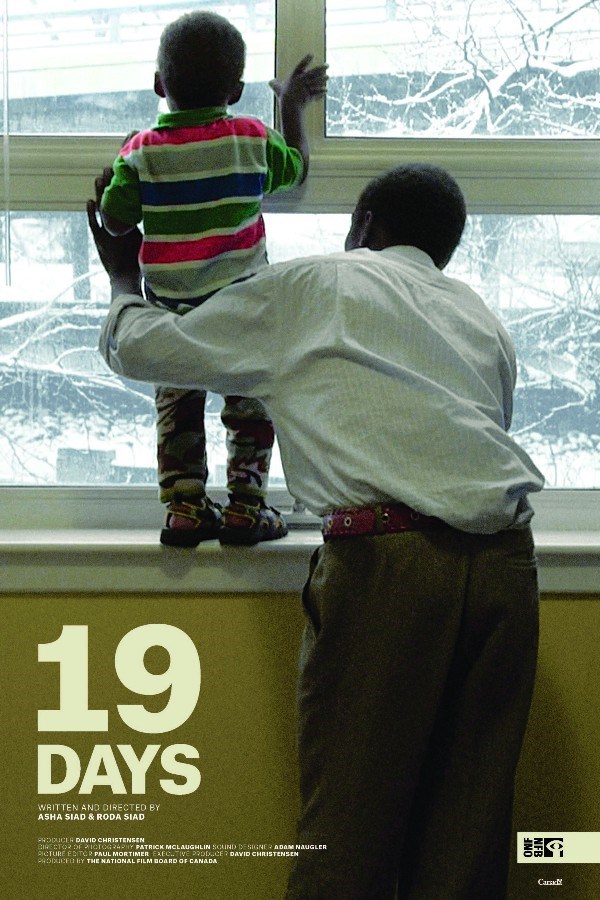
Tuesday, June 21, 2016

By Abdi Latif Dahir, Journalist, Traveler, Listener, Interested in books, media and politics. Recently at Columbia Journalism School
“19 Days” opens with a grim and poignant scene: a young Syrian family has just arrived in Calgary, a city in the Canadian province of Alberta. An immigration official is helping them pick colorful beanies, mittens and snow boots for their two daughters. The older daughter is excitedly showing off her new gloves to her father, when she says in Arabic, “There’s so much clothes, clothes, clothes, clothes.” And then, a little later, “I know why they are giving us these things for free. It’s because this country is very cold. That’s why it’s all free.”
The documentary offers a glimpse into the lives of refugees as they learn to settle in their new home. It specifically documents the first 19 days of several refugee families — from Burundi, Syria and Sudan — who are resettled in Calgary. Following their arrival, these families are taken to the Margaret Chisholm Resettlement Center, where they receive medical check-up, counseling, and get oriented on how to integrate better. Overall, the short documentary offers an insider’s look at Canada’s resettlement process, and answers the ultimate question: what happens when refugees reach their final destination?
The filmmakers trying to answer this question are sisters Asha and Roda Siad. They are award-winning journalists and filmmakers, and the daughters of Somali refugees who came to Canada in the 1990s. Their documentary, launched to commemorate World Refugee Day on June 20, comes at a time when there are more people displaced by war and persecution since World War II. More than 65 million people are now forced out of their homes: that is one in every 113 people, or 24 people each minute, according to areport released by the United Nations. Thus, the story most focused on is that of the refugees’ journey, their movement across seas, borders and continents. The one less highlighted is how they cope when they are granted asylum and resettled into towns and cities across the world.
As the film shows, the refugees come to realize fast that not everything is abundant or free. Many of the families cannot cope with the emotional toll that comes with being so far away from friends and relatives. Exhausted from their travels — and travails — they quickly have to adapt to their new homes. Soon enough, they grapple with new challenges such as learning English, adapting to the cold, paying for rent, electricity and telephone services. Just as their journeys from the other end began with running away and moving out, a new journey in a new safe home begins with moving in.
The documentary is replete with ordinary moments of daily activity that merge to create a powerful narrative of what it means to be a refugee in a new country. We see this when the Burundian refugees ask about how to drain the water from a bathtub. “How does the water disappear?” the father asks in Kiswahili. We see this with the families watching cartoons, the kids building with Legos, playing in the snow (“Is it salt or sugar? It is sugar for sure,” the father says), and with parents worried about whether they will ever be fluent in English.
We also see this with the Sudanese refugee who repeatedly calls home for three days, but in vain. When his call finally goes through to the village, the lady on the other side asks, “Are you Mustafa?” to which he replies in Juba Arabic yes. “Our Mustafa?” she asks, and he says, “Yes. We’ve been trying to call you for the past three days. … I swear we are doing well.”
It is these ordinary moments that make “19 Days” evoke a sense of sadness and the isolation that accompanies migration. In a world where refugees are put into categories and statistics, the documentary puts a human face to the global migration crisis. The refugees staying at the Margaret Chisholm center come from Sudan, Pakistan, Nepal, Iraq, Syria and Burundi. The fact that the documentary has no voice-overs, text or music also enhances the experience of the viewer, and emphasizes the oneness of all human suffering.
Asha and Roda make up a powerful reportorial tag team. This documentary acts almost as a coda to “Living at the Border,” their in-depth multimedia project that explored the lives of African refugees living in Italy. Throughout their work, the two sisters have focused on promoting social change and documenting the complexities of seeking asylum and attaining integration.
The final scene of “19 Days” is a testament to the fact that their job is far from over. Long after the original characters have left the resettlement center, a new refugee arrives and is being registered. It is a testament to the beginning and continuity of the cycle of migration: confusing in its beginning, hopeful in its end — if you are lucky. As the refugee is rolled into the room in her wheelchair, she is asked the inescapable question that greets anyone who has left home: Your name?